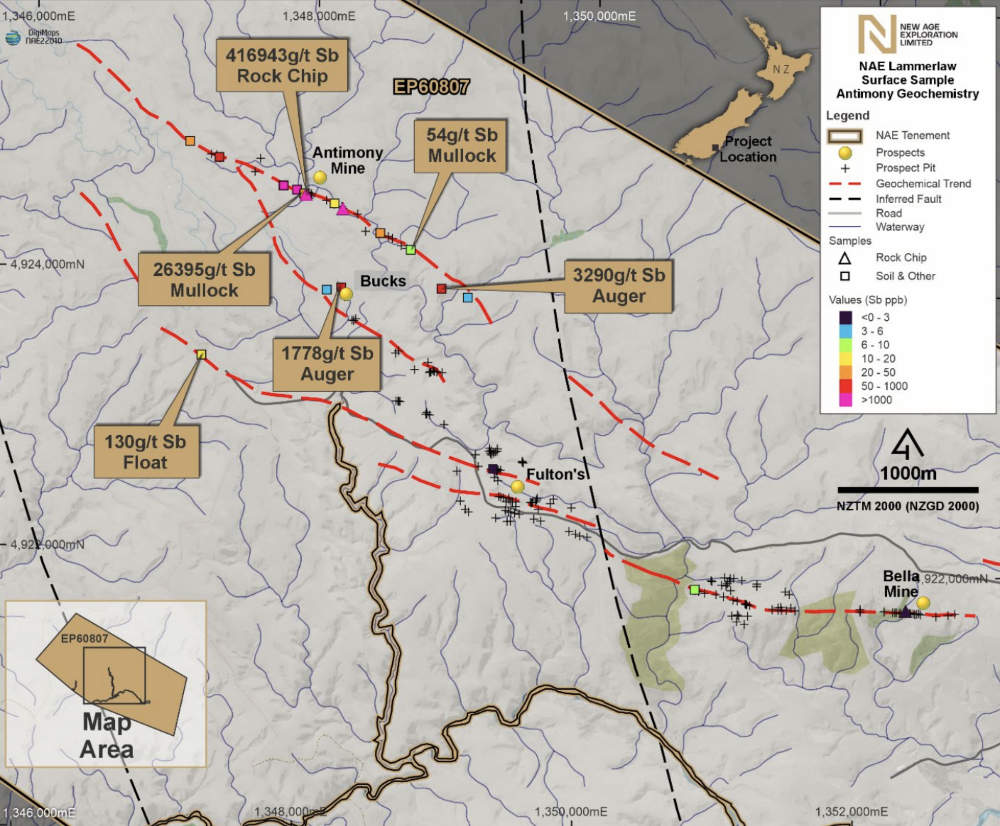New Age identifies nine gold and antimony targets at Lammerlaw
Mining
Mining
Special Report: New Age Exploration’s geochemical surveys and geological interpretation has defined nine high-priority gold and antimony drill targets within the Lammerlaw project in New Zealand.
The targets were defined by a number of soil sampling campaigns, geological mapping, and interpretation of geophysical data.
Drilling will test gold, arsenic, antimony, and tungsten anomalies in soil samples, structural trends from regional airborne geophysics and interpretation of historical mining data.
New Age Exploration (ASX:NAE) is currently completing final geochemistry work on samples and is negotiating access and engaging drill contractors ahead of starting drilling in Q1 2025.
“We are excited to announce the significant progress made at the Lammerlaw Project in New Zealand, where we’ve identified nine high-priority drill targets for gold and antimony exploration,” executive director Joshua Wellisch said.
“The historical data combined with our recent geochemical surveys have revealed the potential for substantial high-grade mineralisation.
“The Lammerlaw Project offers a unique opportunity for NAE. It has a 2km antimony strike, historically mined high-grade stibnite, and ongoing soil sampling indicating strong gold and tungsten anomalies.”

The 265km2 Lammerlaw project hosts the historically mined Bella Lode where gold was mined in the late 1800s with an average grade of 15g/t over 0.6-1.8m thickness, before the mine closed in 1901.
Previous mining in the area also produced ~150t of high-grade stibnite (over 50% antimony).
The antimony mineralisation strikes for up to 2km and remains open to the east and west.
NAE notes that the geochemical and geological data collected to date are compatible with the southward-dipping Macraes-style mineral system that it targets in the project.
It adds that anomalies in gold geochemistry from soil sampling coincide with historical workings and mineralisation trends identified by previous exploration and are subparallel to mapped schistosity and trends in regional airborne geophysics.
The company is currently awaiting results from an additional 140 soil samples, which will help refine and extend drill targets, potentially unlocking more mineralised zones.
Its planned drilling will target gold, antimony and tungsten anomalies identified through soil geochemistry and historical workings.
This article was developed in collaboration with New Age Exploration, a Stockhead advertiser at the time of publishing.
This article does not constitute financial product advice. You should consider obtaining independent advice before making any financial decisions.